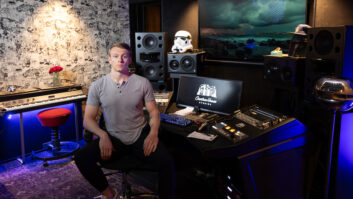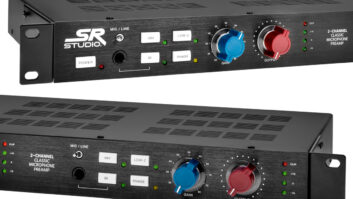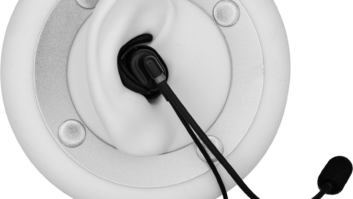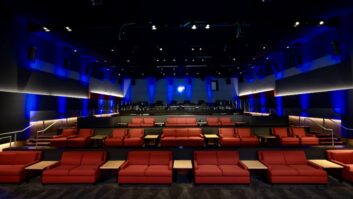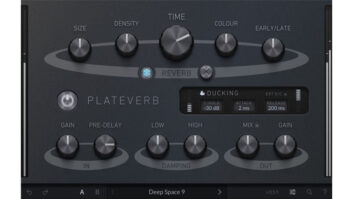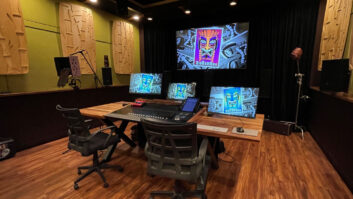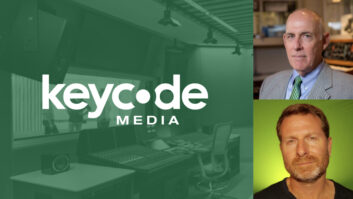Composers heading to New York to find work in this town’s audio post market are often cowed by the number of well-appointed project studios that are tucked inside the city’s steel canyons. But a strategy centered on staying small can also be productive, if you’ve got the chops and interpersonal skills that the spot and film community requires. Case in point: Pierre Foldes.
The classically trained Paris native came to America 18 months ago, knowing no one and without any job prospects. Today he’s composing and arranging a steady stream of work out of his tiny West Village project studio.
“I was trying to meet people when I arrived here, and I struck up a friendship with a sound designer at Howard Schwartz Recording,” says Foldes. “Visiting him one day, I met a mixer who, finding out that I was a composer looking for work, told me that she knew another French person who produced commercial music, Jean-Marie Salon. I couldn’t believe it-I was in a band with this guy years ago in France! We hooked up, and I wrote some spots for him.”
Back in Paris, Foldes owns a large studio with his guitar-playing brother, who uses the facility for his own projects and books it to outside talent as well. Here in the states, Pierre is keeping it simple. “I own a Macintosh laptop computer, which is necessary because I like to take my projects back and forth when I return to Paris, which I do frequently,” says Foldes. “I’m looking forward to Macintosh releasing a G4 laptop. It should be powerful enough for me to run digital audio and software synthesizers on it. I tried hard disk recording straight to the computer several years ago, but there were too many limitations for me.”
All his tracking is done to a Korg D-16 hard disk/mixer. “It’s a very cool little box. For sounds, I rely on my E-mu Systems E4 XT Ultra sampler and a Yamaha QY-70 synth. That’s it,” Foldes explains. “I try to avoid recording by layering-I like to have as many sounds as I can have live, so that I can tweak as I go along. The E-mu sounds very good, and I have it maxed out to 128 megs, but given the size of multisamples these days, that’s still not enough memory.
“The D-16 sounds good, better than some other recorders in its price range I’ve heard. It doesn’t use compression,” he continues. “I like to take sounds from the E4 into the Korg through the recorder’s digital input, and so I bought a Doctor D universal signal converter. It accepts the AES/EBU signal from the E4 and converts it into a Lightpipe output, which is what the D-16 wants to hear. The sound that gets tracked this way is very good. The D-16 ships with 18 effects, and they’re pretty good.”
Foldes is building up a reel that includes a number of finals he has mixed entirely within his Korg, and others that have been built within it, transferred to a larger facility and had live parts added on. “It really comes down to using the equipment you have as creatively as possible,” says Foldes. “I just bought a TC Electronic M1 effects device. It doesn’t have the same quality as their 2000 or 3000 boxes, but it’s pretty good, and I always try to think of how I can use all of this equipment in the most artistic way possible.”
His spot reel includes scores for Microsoft, Motorola and Hertz. As the work flow increases, Foldes is slowly purchasing more equipment. “I bought a pair of Event PS-5s-that’s the smallest set of powered monitors in their line. They sound very good! At first, I thought, hmm, there’s nothing much happening on the high end, but I was wrong. They’re very precise and have a lot of bottom. Back in Paris, I own Genelecs. Compared to them, the Events are very different, but amazing for the price.”
Do some composers simply look for boxes with blow away presets and in doing so limit the individuality of their sonic creations? “Well, let me tell you about the Yamaha QY-70,” Foldes says. “It’s a very small module, almost the size of the hand, that has 16 multitimbre voices. It’s extremely simple, and it has an onboard sequencer and effects. If you spend a lot of time on it, you can do some incredible stuff, but if you simply examine individual sounds you say, ‘Well, it’s not so good.’ I’ve taken this device around the world, working on sounds as I go, and I’ve gotten some very good results from it.”

